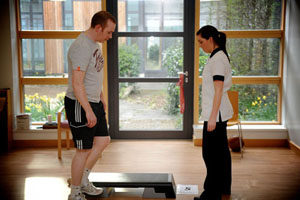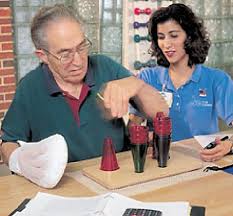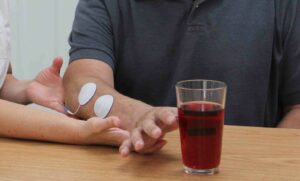Free Online CEU Electrical Stimulation Course for OT’s
NeuroRehab Team
Monday, December 26th, 2022
Course Title:
Electrical Stimulation for Stroke Recovery. A review of evidence-based clinical considerations.
Overview:
This AOTA approved online self-study continuing education class will introduce you to evidence-based practice surrounding electrical stimulation to the stroke population.
The online class is intended for medical professionals (e.g. OT/OTA, PT/PTA, Physicians, etc.) directly related to the rehabilitation of a patient or client. To participate in this CEU and receive credit, the participant must be a licensed, treating clinician. Completion of this course will reward the participant with .1 CEUs or 1 contact hour, following completion of the presentation and a ≥80% score on the quiz. You will have 90 days to complete this course.
Online Shoulder Stroke/Neuro Occupational Therapy CEUs
NeuroRehab Team
Saturday, November 26th, 2022
Shoulder pain resulting from stroke hemiplegia is a common clinical consequence. Hemiplegic shoulder pain can occur as early as two weeks post-stroke but an onset of two to three months is more typical. Frozen shoulder, pain and weakness can negatively affect rehabilitation outcomes as good shoulder function is a prerequisite for successful transfers, maintaining balance, effective hand function, and performing ADL’s activities of daily living.
How to Select a Top OT Stroke CEU – Continuing Education Class
NeuroRehab Team
Saturday, November 19th, 2022

Stroke recovery is a hard and long journey for most patients. There are therapists that “treat neuro patients” and then there are “neuro therapists”. In order for a patient to reach maximum potential with their rehab journey, they will need a clinician that understands, appreciates and knows the neurorecovery process.
Leg and Mobility Neuro Stroke Courses
NeuroRehab Team
Tuesday, September 13th, 2016

Are you caught up with the latest advances in neurorehabilitation? Find relevant stroke neuro courses below to be sure.
Upper Extremity Stroke Rehab CEU’s.
NeuroRehab Team
Monday, August 29th, 2016

Stroke Recovery By The Numbers
Arm and hand recovery continues to be a major problem following neurological injury. According to scientific data, fifty-percent of stroke survivors are likely to regain some functional use of the upper limb (Broeks JG et al. Disabl and Rehabil, 1999).
Find Arm and Hand NeuroRehab Courses
Forty-one percent of all patients had limited hand use at 3 months and 45% at 18 months after stroke (Welmer AK et al. J Rehabil Med, 2008). At 6 months post stroke, some dexterity was found in 38% and complete functional recovery was seen in 11.6% of patients (Kwakkel G et al. Stroke, 2003).
The latest research shows that the brain is capable of rewiring and adapting after stroke. To improve function in the upper limb, the client must be willing to incorporate the affected side purposefully, functionally, and repeatedly. In addition to functional training, other evidence-based strategies include strength training, mental imagery, robotics, and gravity compensation.
The American Occupational Therapy Association's (AOTA's) Approved Provider Program (APP) assists occupational therapy practitioners (OTPs) and state licensing boards to ensure professional development activities reflect evidence-informed, occupation-centered practice. AOTA Approved Providers demonstrate they have the systems, policies, procedures and educational practices in place to adhere to the APP Guidelines and Criteria.

The above courses are evidence-based courses that review the latest information when it comes to stroke recovery. To search for stroke rehab exercise tools, visit here get started.
Helpful One-Handed Strategies for Personal Care ADL Tasks.
NeuroRehab Team
Monday, August 29th, 2016
CEU'sSelf-Care Activities (ADL)

Occupational therapists advise and counsel clients on strategies to increase functional independence and improve quality of life. Many occupational therapists struggle with knowing how to demonstrate adaptive strategies to clients who have suffered loss of one hand or loss of function of one hand to complete functional activities.
New Online Stroke/Neuro CEU Courses Now Available.
NeuroRehab Team
Wednesday, August 24th, 2016
Arm and HandCEU'sCognitionCommunicationDysphagiaLegVision

Now more than ever, occupational, physical and speech therapists are relying on evidence-based treatment to provide maximum outcomes for clients suffering from stroke and other neurological injuries. Get up-to-date with the latest advances in stroke/neuro treatment by enhancing your skills through continuing education courses.
Listed below are links to online training categorized into key groups. Feel free to click on the link to learn more about available courses.


